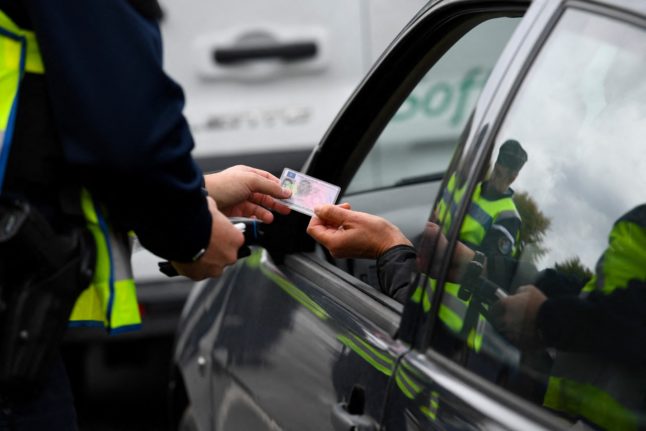If you’re a non-EU citizen and you want to spend longer than 90 days out of every 180 in France then you will need a visa – and there are many different types of visa depending on your personal circumstances.
We take a look at the different visa types and how to apply for them HERE.
But a frequent cause of confusion is that there are two visas commonly known as a ‘visitor’ visa – the VLS-T and the VLS-TS. They are in fact completely different documents giving you vastly different rights in France.
Recently, some social media users in the popular visa and residency permit Facebook group, “Applying for a French CdS (Carte de Séjour) and/or visa” have complained of being issued the wrong visitor visa.
If you have applied for either a VLS-T or VLS-TS recently, and you have had a similar experience, please fill out our survey (at the bottom of this article).
Short-stay visitor visa
Technically known as the visa de long séjour temporaire visiteur – or VLS-T – this visa is perhaps the better named one as it is for visitors – by which we mean people who don’t live in France.
This is a six-month visa and it’s most commonly used by second-home owners who don’t want to be constrained by the 90-day rule, although it is also used by others who want to make longer trips to France without working.
The crucial point about this visa is that you are not a resident of France, you keep your residency in another country, most usually your home country.
Not being a resident in France is important because it imposes certain limits – for example if the borders were closed again for whatever reason you would not be allowed entry to France as a visitor (unless you had an essential reason) – but it also exempts you from certain duties that are imposed on residents, such as making the annual tax declaration.
If you do not want to spend plan to spend more than six months in France, then be sure when applying to pay special attention to the “Details of your stay” section, which asks how long you plan to be in France.
As of May 2023, the options were listed as: “Between 3 to 6 months”; “Between 6 months and a year”; “More than a year”. It is the consulate that decides which visa to issue based on information provided in your application, so consider including as much information as possible about the nature of your stay in order to ensure the correct visitor visa is issued.
You can obtain one six-month visitor visa in every 12 months – because by the government’s reckoning if you spend more than six months of the year in France then you are a resident.
We’ll let them explain: “If you are spending between three and six months a year in France in total, you are not considered as a resident in France. You will have to apply for a temporary visitor visa – visa de long séjour temporaire visiteur.
“If you spend more than six months a year in France, you are then considered as a French resident and must apply for a long stay visitor visa (visa de long séjour valant titre de séjour visiteur).”
You can apply for multiple short-stay visas, but only with a six month gap in between them – so far example you can have a visa from January-June 2021, then another from January-June 2022, then January-June 2023 and so on. But you can’t have a visa from January-June 2022 and then September 2022 to February 2023.
During its validity period, you are exempt from the 90-day rule in France (and only in France, the rule still applies if you travel to another EU/Schengen zone country) and your passport doesn’t need to be stamped when entering or exiting France.
Once the visa expires, you revert to being constrained by the 90-day rule, with passport-stamping.
READ ALSO How does getting a visa affect the 90-day rule?
You can find full details of the requirements for a short-stay visitor visa HERE, but one important thing to note is that you must give an undertaking that you will not work in France.
Your visitor visa does not entitle you to register in the French health system, or to obtain a carte de séjour residency card.
READ ALSO Can second-home owners get a carte de séjour?
Long-stay visitor visa
This visa – formally known as the visa de long séjour valant titre de séjour visiteur or VLS-TS – is, in our humble opinion, quite misleadingly named, as people who have this visa aren’t visitors at all, they live here.
The long-stay visitor visa is for people coming to France to live who don’t intend to work or study – it’s most commonly used by retired people.
With this visa you are a resident of France, so have extra rights such as being allowed back in to the country if the borders close and being able to register in the French health system. But with rights come responsibilities, including having to file the annual French tax declaration (even if all your income comes from outside France, such as a pension from your home country).
Like the short-stay visitor visa you need to give an undertaking that you won’t work in France in order to get this visa, and you will need to demonstrate that you have sufficient financial means to support yourself while you’re here without becoming a burden on the French state.
Just like the other types of visas for residents, after obtaining the long-stay visitor visa you are then able to get a carte de séjour residency card.
Time spent in France on a long-stay visitor visa counts towards the minimum residency period if you intend to apply for French citizenship.
You can find full details on how to apply for the long-stay visitor visa HERE.



 Please whitelist us to continue reading.
Please whitelist us to continue reading.
A rider to the above.
We have a VLS-T, multi entry 6 month Visa. Despite showing this to border control our passports are duly stamped each time. Pointing out the Visa is merely acknowledged with a shrug. Pursuing a discussion would only irritate others in the queue I suspect.
Well, it’s not strictly true that a holder of a 1-year visitor visa (or titre de sejour) is automatically a resident for tax purposes. One can spend less than six months a year in France but still need (and hold) a 1-yr. visitor titre de sejour if the six months are spread throughout the year (e.g., January, May-July, September, December) and not within a consecutive six-month period.